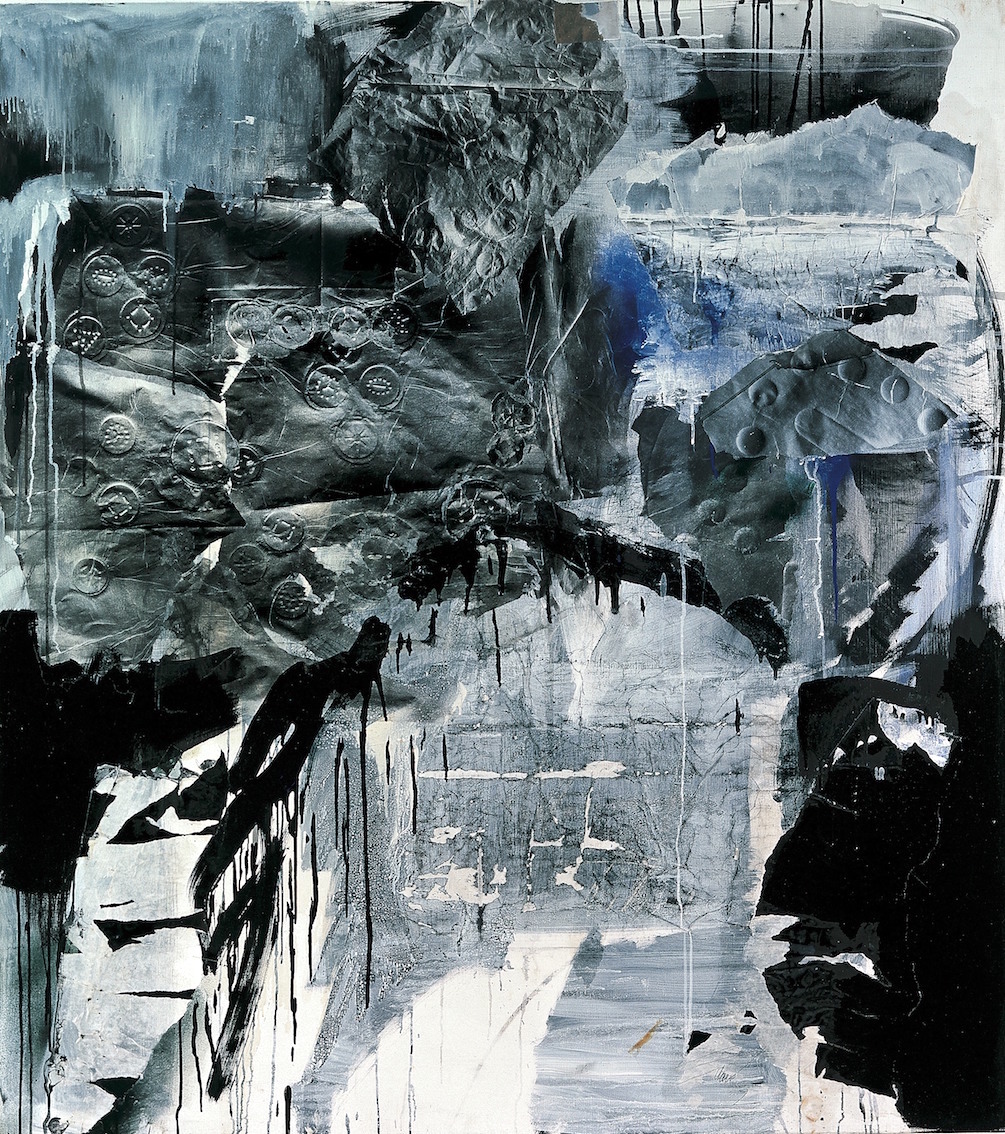“365 jours après” forms part of the last works of Antoni Clavé. Completed in 2002, it has the vivacity and the freedom of a young creator of 89 who no longer has anything to prove. From Duchamp, Picasso, the collages and assemblages of surrealist objects, the 20th century didn’t cease to convey the real in art. Clavé is evidently of this century, of his century, that of Robert Rauschenberg. That of alchemist creators who didn’t hesitate to use abandoned objects removed from the reality of the everyday. Rauschenberg’s Combines associated the practice of painting with that of collage and assemblage of the most diverse objects. It was in Rebeyrolle that the luck of meetings and cultural programmes recently presented to the public a monographic Antoni Clavé exhibition. A nod of artistic kindness…
Clavé nevertheless reserved his assemblages of wasted objects for his sculptures but he supported the comparison with Rauschenberg and more particularly his period of Silkscreen paintings which succeeded that of Combines. Reproduction and multiplication invited themselves into the work of American painter and the silkscreen prints produced in the beginning of the 1960s are among some of the most famous today. Collage of images, parts of posters or other reproductions combined themselves with the style of abstract expressionism.
Of course, it was never a question of action painting nor a pop aesthetic for Clavé. However, the technique of transfer, that of reproduction and that of reappropriation were at the heart of his work from the 1960s. Collage, assemblage on the canvas form part of Clavé’s artistic identity. “365 jours après” fits entirely into this artistic research. The recurring motifs of signs are presented, reproduced, widened, stuck, assembled and tangled up with the paint. These last ones are completely free, close to light. “365 jours après” is in reality an invitation for contemplation.

